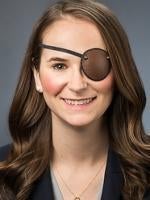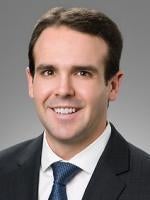Beginning on March 29, 2021, Senate Bill 95 will place additional requirements on employers to provide supplemental paid sick leave to employees impacted by COVID-19. The bill, which was approved by the legislature on March 18, 2021, and signed by Governor Gavin Newsom on March 19, 2021, creates California Labor Code Sections 248.2 and 248.3. SB 95 dramatically expands the number of employees eligible for COVID-19 paid sick leave, expands the reasons an employee may take paid sick leave, and applies retroactively to January 1, 2021, which will require some employers who previously granted employees unpaid leave for COVID-19 related reasons to retroactively compensate those employees. Therefore, every employer in California should review SB 95 carefully.
Last year, prior to the enactment of SB 95, Governor Newsom issued an Executive Order targeted solely at food sector workers that required employers to provide supplemental paid sick leave to those employees. Following the Governor’s lead, the California Legislature then enacted Assembly Bill 1867 in order to expand the requirement to provide supplemental paid sick leave to all businesses that employed 500 or more employees. Notably, the Legislature did not limit AB 1867 to food sector workers. AB 1867 included a sunset provision and that legislation expired on December 31, 2020. SB 95 builds upon the Executive Order and AB 1867, and retroactively expands the pool of eligible employees and eligible reasons for paid sick leave related to COVID-19 back to January 1, 2021.
SB 95 Expands the Amount of Covered Employers and Employees
This new legislation encompasses far more employers than the previous executive order and legislation. Now, public and private California employers with more than 25 employees nationwide are required to provide employees up to 80 hours of COVID-19 related supplemental paid sick leave. This 80 hours is in addition to the paid sick leave that an employee is already entitled to under the Healthy Workplaces, Healthy Families Act of 2014.
SB 95 also expands the pool of covered employees. Specifically, a covered employee is any employee who is unable to work or telework because: (1) the employee has been advised by a health care provider to self-quarantine; (2) the employee is required to quarantine or isolate pursuant to an order or guideline issued by a State Department of Public Health, the Centers for Disease Control and Prevention, or a local health officer; (3) the employee is attending an appointment to receive a COVID-19 vaccine; (4) the employee is experiencing COVID-19 related symptoms and is unable to work or telework; (5) the employee is seeking a medical diagnosis related to COVID-19 symptoms; (6) the employee is caring for a family member as a result of COVID-19; or (7) the employee must care for a child whose school or daycare has been closed due to COVID-19 on the premises.
A covered employee is entitled to 80 hours of COVID-19 related supplemental paid sick leave if the employee is a full time employee. An employee is also eligible for 80 hours of paid sick leave if the employee worked, or was scheduled to work, an average of at least 40 hours per week for the employer in the two weeks prior to the date the employee took a COVID-19 related leave. This means that employers must closely examine the schedules and/or time records of non-exempt employees in the two weeks preceding a COVID-19 related leave. Further, if an employee is not full time, or does not meet the 40-hour test, the employee may nonetheless still be eligible for supplemental paid sick leave based upon the amount of hours the employee is normally scheduled to work for the employer over a two-week period, or an even more complicated variable hours amount multiplied by 14.
It is important to note that although the Federal Families First Coronavirus Response Act and AB 1867 both expired on December 31, 2021, SB 95 allows covered employees to take up to an additional 80 hours of leave related to COVID-19. Furthermore, an employer may not require an employee to exhaust previously earned sick, vacation, or paid time off leave before using COVID-19 specific leave.
In sum, the amount of employees who are now entitled to take up to 80 hours of COVID-19 related supplemental paid sick leave has drastically increased under SB 95.
SB 95 Impacts the Rate of Pay for Sick Leave
Under the new legislation, the rate of pay for supplemental paid sick leave shall be the highest of the following calculated rates for non-exempt employees:
-
A rate calculated in the same manner as the regular rate of pay for the workweek where the employee uses COVID-19 supplemental paid sick leave, whether or not the employee works overtime that workweek;
-
A rate calculated by dividing the covered employee’s total wages, excluding overtime premium pay, by total hours worked in the full pay periods of the prior 90 days of employment;
-
A rate calculated at the state minimum wage; or
-
The applicable local minimum wage to which the employee is entitled.
Additionally, the employee’s paystub must separately reflect the amount of COVID-19 supplemental leave available, the rate of pay, and any corresponding wages. Importantly, this means COVID-19 supplemental paid sick leave must be set forth as an entirely separate line item from regular paid sick leave. The Labor Commissioner is required to provide a model notice template wage statement by April 5, 2021. The wage statement requirement will not be enforceable against an employer until the next full pay period following March 29, 2021. Therefore, employers must quickly implement the new COVID-19 supplemental paid sick leave requirements and update their wage statements as well.
SB 95 Is Retroactive to January 1, 2021
The COVID-19 supplemental paid sick leave requirements set forth in SB 95 apply retroactively to January 1, 2021. Accordingly, many employers may need to retroactively pay supplemental sick pay benefits to employees who were unable to work or telecommute due to COVID-19 earlier this year if the eligible employee was not compensated at the correct rate set forth above, and if the employee makes a written or oral request for supplemental COVID-19 paid sick leave.
Conclusion
All employers in California with more than 25 employees nationwide should review SB 95 and analyze it’s impact upon the employer’s supplemental paid sick leave requirements. Because this new legislation will go into effect on March 29, 2021, and is set to expire September 30, 2021, time is of the essence. Thus, employers should seek legal advice as soon as possible in connection with this legislation.
The legal landscape continues to evolve quickly and there is a lack of clear-cut authority or bright line rules on implementation. This article is not intended to be an unequivocal, one-size fits all guidance, but instead represents our interpretation of where applicable law currently and generally stands. This article does not address the potential impacts of the numerous other local, state and federal orders that have been issued in response to the COVID-19 pandemic, including, without limitation, potential liability should an employee become ill, requirements regarding family leave, sick pay and other issues.




 />i
/>i
